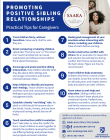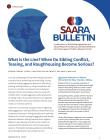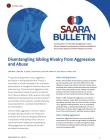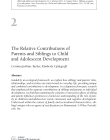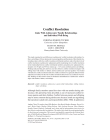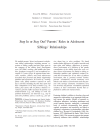Sibling aggression and abuse are often confused with sibling rivalry or conflict, but they are not the same. It is critical we understand and learn to recognize the differences.
Sibling rivalry is a form of competition for parents’ favor, love, attention, and financial resources. Although siblings may not be mindful of each other's feelings, rivalry does not involve harm or control. It often includes jealousy, competition, and bickering and can continue across the lifespan. Rivalry can help siblings establish their unique identity within the family.
Sibling conflict is normal and expected. It can be very frequent, but most conflicts are mild, and some amount of conflict is good for socio-emotional development. During sibling conflicts, children can learn listening skills, cooperation, seeing another person’s point of view, and managing their emotions. They can also learn how to solve problems, consider future possibilities, and experience the consequences of their actions.
When children gain these skills, they develop warmer sibling relationships and experience less sibling conflict and rivalry. These skills also inform positive peer and romantic relationships. However, not all sibling conflicts are positive. Some conflicts can lead to aggression, emotional and physical harm, and damage to sibling relationships.
The distinction between constructive and destructive conflict helps us identify when sibling conflicts cross the line and become problematic. Learn More
Constructive Conflict
Not emotionally intense
Specific issue identified
Mutually satisfying resolution
Enhances relationship quality
Promotes socio-emotional skills
Destructive Conflict
Emotionally intense, escalates
No agreement on issue
Winner and loser
Unlikely to resolve
Leads to aggression



